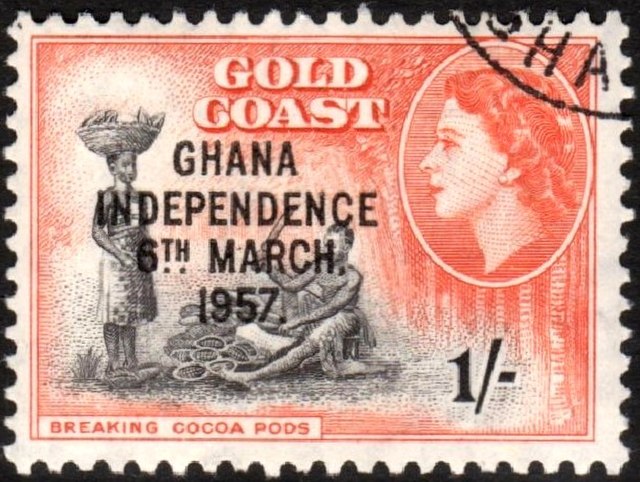The Dagombas or Dagbamba are an ethnic group of Ghana, and Togo. They number more than 3.1 million people. The term Dagbamba is originally extended to refer to other related peoples who were unified by Naa Gbewaa including the Mamprusi and Nanumba. The Dagomba country is called Dagbon and they speak Dagbanli language. Dagbanli is the most spoken language of northern Ghana and second most widely spoken local language of Ghana. Dagbanli belongs to the Mabia (Mole-Dagbani) subgroup of the Gur languages, a large group of related languages in West Africa. The Dagomba practises both patrilineal and matrilineal systems of inheritance.
A Dagomba lady on a horse.
A man in a full Dagomba traditional wear.
Northern territories chiefs and elders at the Volta River project travelling exhibition (1950)
Samata Angel
Ghana, officially the Republic of Ghana, is a country in West Africa. It abuts the Gulf of Guinea and the Atlantic Ocean to the south, sharing a border with Ivory Coast in the west, Burkina Faso in the north, and Togo in the east. Ghana covers an area of 239,567 km2 (92,497 sq mi), spanning diverse biomes that range from coastal savannas to tropical rainforests. With over 32 million inhabitants, Ghana is the second-most populous country in West Africa. The capital and largest city is Accra; other significant cities include Kumasi, Tamale, and Sekondi-Takoradi.
18th-century Ashanti brass kuduo. Gold dust and nuggets were kept in kuduo, as were other items of personal value and significance. As receptacles for their owners' kra, or life force, kuduo were prominent features of ceremonies designed to honour and protect that individual.
The Portuguese established the Portuguese Gold Coast with the construction of Elmina Castle (Castelo da Mina) by Diogo de Azambuja in 1482, making it the oldest European building in sub-Saharan Africa.
A Gold Coast postage stamp overprinted for Ghanaian independence in 1957
Traditional chiefs in 2015








